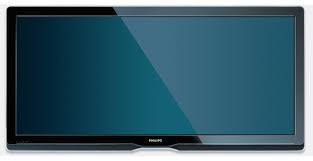Despite the existence of PALplus and support for widescreen in the DVB-based digital satellite, terrestrial and cable broadcasts in use across Europe, only Belgium, Ireland, the Netherlands, Austria, Germany, Scandinavia and the UK have adopted widescreen on a large scale, with over half of all widescreen channels available by satellite in Europe targeting those areas.
16:9 TV displays have come into wide use. They are typically used in conjunction with Digital, High-Definition Television (HDTV) receivers, or Standard-Definition (SD) DVD players and other digital television sources. Digital material is provided to widescreen TVs either in high-definition format, which is natively 16:9 (1.78:1), or as an anamorphically-compressed standard-definition picture. Typically, devices decoding Digital Standard-Definition pictures can be programmed to provide anamorphic widescreen formatting, for 16:9 sets, and formatting for 4:3 sets. Pan-and-scan mode can be used on 4:3 if the producers of the material have included the necessary panning data; if this data is absent, letterboxing or centre cut-out is used.
HD DVD and Blu-ray disc players were introduced in 2006. Toshiba ceased production of HD DVD players in early 2008 after key defections from the HD DVD camp damaged the viability of the format. As of 2010 it still remains to be seen whether Blu-ray will stimulate the sales of HD pre-recorded films on disc, and more HD monitors and tuners. Consumer camcorders are also available in the HD-video format at fairly low prices. These developments will result in more options for viewing widescreen images on television monitors.
Computer displays
Computer displays with aspect ratios wider than 4:3 are also called widescreen. Widescreen computer displays are mainly intended for computers used, at least sometimes, to display entertainment; data processing tends to use 4:3. Widescreen computer displays are typically of the 1.6 (8:5, typically written as 16:10) aspect ratio. "True" widescreen (16:9) monitors can be found in resolutions of 1024x576, 1152x648, 1280x720, 1600x900, and 1920x1080. Apple's 27" iMac introduced a new 16:9 resolution: 2560x1440 in late 2009.
By 2010, many manufacturers had practically abandoned the older 4:3 format, instead opting to manufacture 16:10 models, and lately, even shorter 16:9 displays.
Please Visit to MyCheapWidescreenMonitorsShop

No comments:
Post a Comment